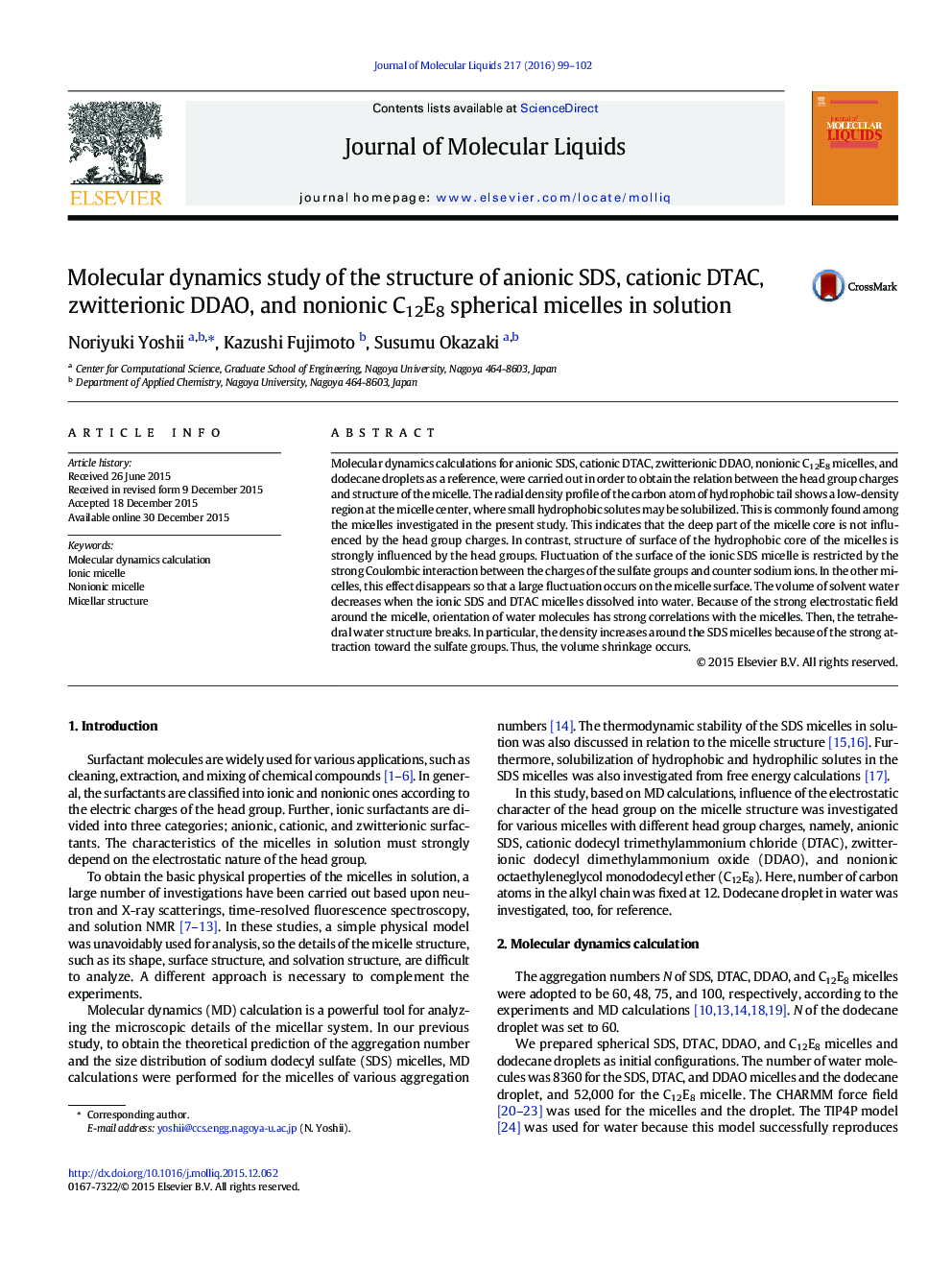| Article ID | Journal | Published Year | Pages | File Type |
|---|---|---|---|---|
| 5410076 | Journal of Molecular Liquids | 2016 | 4 Pages |
â¢Molecular dynamics calculations were performed for ionic and nonionic micelles.â¢Fluctuation of ionic micelle surface was restricted compared with nonionic one.â¢The tetrahedral water structure breaks due to the micellar surface charges.â¢The increase of the water density was observed at the SDS micelle surface.
Molecular dynamics calculations for anionic SDS, cationic DTAC, zwitterionic DDAO, nonionic C12E8 micelles, and dodecane droplets as a reference, were carried out in order to obtain the relation between the head group charges and structure of the micelle. The radial density profile of the carbon atom of hydrophobic tail shows a low-density region at the micelle center, where small hydrophobic solutes may be solubilized. This is commonly found among the micelles investigated in the present study. This indicates that the deep part of the micelle core is not influenced by the head group charges. In contrast, structure of surface of the hydrophobic core of the micelles is strongly influenced by the head groups. Fluctuation of the surface of the ionic SDS micelle is restricted by the strong Coulombic interaction between the charges of the sulfate groups and counter sodium ions. In the other micelles, this effect disappears so that a large fluctuation occurs on the micelle surface. The volume of solvent water decreases when the ionic SDS and DTAC micelles dissolved into water. Because of the strong electrostatic field around the micelle, orientation of water molecules has strong correlations with the micelles. Then, the tetrahedral water structure breaks. In particular, the density increases around the SDS micelles because of the strong attraction toward the sulfate groups. Thus, the volume shrinkage occurs.
